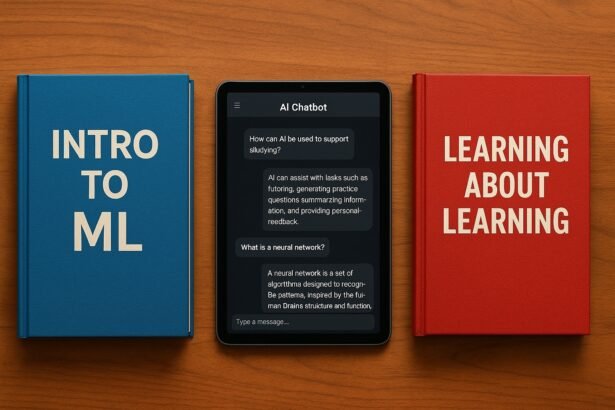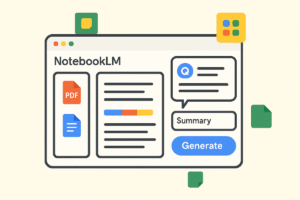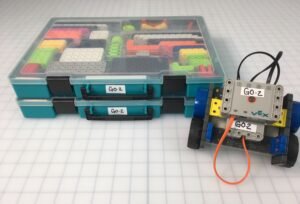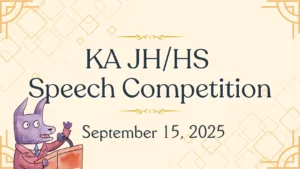When we think about studying, most of us picture textbooks, flashcards, or maybe videos and online courses. But what if there were another way to study—one that’s conversational, responsive, and tailored specifically to your questions? Over the past year, I explored exactly that by using OpenAI ChatGPT as a Study Tool as my personal study partner. Through my experiences learning programming, preparing for an AWS certification, and currently studying for the Japanese-language G検定 machine learning test, I’ve discovered firsthand how conversational AI can transform study sessions into engaging, interactive learning experiences.
Here’s what I learned along the way.
What is ChatGPT?
Before diving into my experiences, let’s briefly look at what exactly ChatGPT is. It’s an advanced conversational AI developed by OpenAI, designed to interact naturally through human-like conversations. Think of it as a knowledgeable digital assistant: it understands your questions, provides explanations, and can guide you through complex topics, almost like chatting with a helpful tutor who’s always available.
Learning Programming with ChatGPT
My first significant experience with ChatGPT was learning how to code in Python. I had started entirely on my own, using textbooks, online tutorials, YouTube videos, and practice problems. Initially, I made good progress, picking up syntax in several languages and solving simple textbook exercises. But soon enough, I hit a wall.
I wanted to build something real, but didn’t know what project to choose or how to move beyond isolated exercises. Without a teacher or mentor, I felt frustrated and unsure how to move forward on my own.
That’s when I began using ChatGPT as a “study buddy.” Instead of passively absorbing information, I started actively engaging by explaining concepts to ChatGPT. It responded by gently clarifying what I had right or pointing out where I was off. Beyond just explanations, ChatGPT could also generate practice problems tailored to the specific topics I was studying and help me check my work. This made my practice more focused and productive, reinforcing my understanding through active problem-solving.
This interactive dialogue filled a crucial gap: immediate feedback. While textbooks and tutorials provided reliable foundations, ChatGPT helped clarify uncertainties directly, making studying not only more effective but also more enjoyable. This approach eased my sense of isolation and gave me the confidence to finally complete my first real project—a Python-based Slack bot deployed within a Docker container.
Pros:
- Very interactive and engaging
- Quick and relevant feedback
- Costs less than a private tutor
Cons:
- Occasionally gives incorrect information
- Can lose context during longer study sessions
- Tempting to let it do all the coding for you
Studying for the AWS AI Practitioner Certification
In 2024 I decided to pursue the AWS AI Practitioner certification—a credential that validates foundational knowledge of Amazon Web Services’ AI offerings. My study time was limited mostly to daily commutes and a short, intensive review period before the exam.
ChatGPT proved invaluable. I began by feeding it Amazon’s official exam description and asked it to generate realistic practice questions. This method quickly revealed my knowledge gaps and areas of strength.
Whenever something was unclear, I asked ChatGPT for a quick explanation. Unlike static resources, it provided tailored, focused answers on demand. Instead of sifting through pages of material, I could zero in on what I needed most, making my limited time incredibly efficient. It could even remember a few review questions for me as I went, so that I could ask it to field back to me the following day.
Though I narrowly passed, the key lesson was clear: interactive, personalized support from ChatGPT dramatically improved the speed and depth of my learning.
Pros:
- Replaced the need for a textbook
- Made navigating AWS product offerings as simple as asking questions
- Rarely gave incorrect answers thanks to access to updated web information
Cons:
- Practice questions were not always close to actual exam questions
- Still had knowledge gaps on test day
- Cumbersome to use for rote memorization or flashcard-style review
Studying for the G検定 (Japanese ML Certification)
I’m currently preparing for the G検定, a general-knowledge machine learning certification conducted entirely in Japanese. Interestingly, the biggest hurdle hasn’t been the technical content—it’s been understanding the language of the test quickly enough to finish within the strict time limit.
Once again, ChatGPT has become my go-to study partner—this time for practicing Japanese language comprehension. Traditional vocabulary lists are helpful, but my real challenge is grasping how technical terms are used in context.
By having direct conversations with ChatGPT about machine learning topics in Japanese, I’ve picked up patterns, phrasing, and sentence structures in a way that feels natural. I’m also studying with a textbook this time around. There is a lot more ground covered in this test, and a fixed curriculum has proved helpful when there is so much to study. It’s also sometimes nicer to have a physical book when trying to study on the train. But ChatGPT is the only place I’ve been able to go to “talk” to “anyone” about ML topics. No one in my circle of friends will chat with me about convolution or depth-first search. But ChatGPT will obediently converse about any of these topics in both English and Japanese.
Pros:
- Amazing bilingual conversations about ML topics
- Dedicated GPT in the GPT store for practice problems
- Great for exploring niche or esoteric topics that are hard to discuss with others
Cons:
- Often mistakes Japanese and Chinese when using TTS
- It can lead you astray if you’re not careful with how you phrase your questions
- Cost: ChatGPT Subscription will exceed my textbook cost
Conclusion
My experiences with using ChatGPT as a study tool have shown me the power of personalized, conversational learning. It didn’t replace textbooks or traditional study methods—it enhanced them. Whether I was overcoming programming roadblocks, efficiently preparing for a certification, or tackling language barriers, ChatGPT delivered exactly the support I needed, right when I needed it.
ChatGPT is a fantastic tool for students who are already ready to be self-directed learners. If you have a student who just wishes there were someone they could talk to about what they’re learning, this tool is amazing. It needs to be used with care—it’s flat-out wrong a surprising amount of the time—but it’s now a permanent part of my study tool belt.








